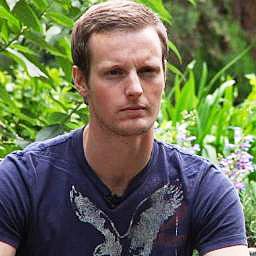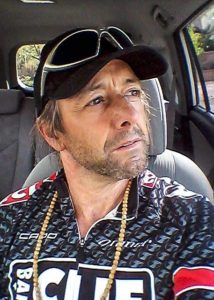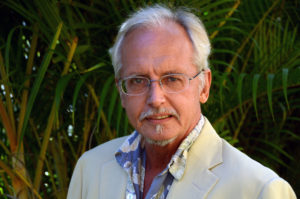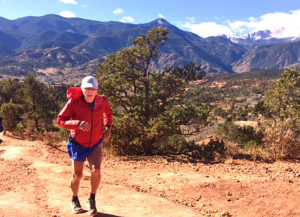26 Jan Dr. James Steele: Easy cardio isn’t enough. It’s time public health advice catches up with science.

Dr. James Steele, author of a provocative study urging public health officials to update government fitness guidelines and practices.
Is it wrong to love cardio-running, biking, swimming, hiking? These are all my favorite ways to exercise. And, according to most national public health guidelines, this is as much as I need to do.
In fairness, U.S. guidelines, as opposed to the guidelines of many other countries do also recommend strength training but that message is too often lost when a physician says you need to start exercising. What they usually mean, and prescribe, is some form of gentle cardio when it turns out higher intensity exercise along with strength training are actually much better options, even for cardiac patients, for all the reasons you’ll soon hear about in the podcast.
James Steele, Associate Professor of Sport and Exercise Science at Southampton Solent University in the UK is the lead author of a paper that appeared last year in BMC Public Health calling for greater emphasis and follow-through by public health officials and doctors in recommending a larger role for higher intensity exercise as well as strength and resistance training.
Dr. Steele is not only an up-and-coming researcher. He practices what he prescribes and has personally worked with Ironman athletes, American Football and professional soccer athletes and Muay Thai fighters.
I was intrigued by the study’s conclusions and disappointed that so little has been done to endorse and publicize the limitations of current exercise recommendations. As is too often the case science supersedes policy and government is woefully slow to catch up.
So it’s up to us to find out what the latest research has discovered and to incorporate the best science into our own practices. Dr. Steele in this podcasts makes a compelling case for a new paradigm for physical activity and gives us both the science behind this thinking as well as specific actions we can take.
I really enjoyed talking with Dr. Steele and hope you enjoy the conversation too. Also check out the show notes and resources for additional information.
I’d be very interested in your comments and what you found most interesting and or useful. Thanks in advance!
Resources
The paper in BMC Public Health which first brought Dr. Steele to my attention: A higher effort-based paradigm in physical activity and exercise for public health: making the case for a greater emphasis on resistance training
Video of Dr. Steele training at home – https://www.youtube.com/watch?
If you’d like to hear more from Dr. Steele listen to the interview with Lawrence Neal at Corporate Warrior – http://www.
To read about a minimal dose approach to resistance training for the older adult; the prophylactic for aging go to– https://www.sciencedirect.com/science/article/pii/S053155651730503X
Another fascinating study, not yet published comparing the benefits of resistance training vs. cardio over similar durations and intensities – https://osf.io/preprints/
Some of Dr. Steele’s current favorite podcasts (other than AgeStronger) are: You Are Not So Smart podcast https://youarenotsosmart.com/
In terms of exercise and health related podcasts he likes Guru Performance https://guruperformance.com/
Interested in connecting or learning more? Follow Dr. Steele on Twitter @jamessteeleii
Show Notes
Resistance training produces high quality outcomes with low volume. 5:30
How this addresses concerns of time and accessibility 5:47
Doctors prescribe aerobic exercise 59% of time vs. only 13% for resistance training 7:47
Why doctors make so few recommendations for physical activity of any kind versus changes in diet 8:23
The lack of physician training about benefits of physical activity 8:37
Most physicians don’t feel competent enough in their knowledge to make recommendations around physical activity 9:02
Low to modest levels of physical activity do not reduce mortality rates 11:22
Two camps of thought: those trying to just get people active and those who want to maximize exercise outcomes 13:59
The strongest predictors for health and longevity 17:57
Why is there such a strong correlation between cardiorespiratory fitness and mortality? 20:00
Results of the Church Study: Increased effort did not increase health benefit 21:20
The benefits of low intensity exercise and limitations 23:41
The best approach 24:00
Defining high intensity resistance training 26:33
The use of light weights vs heavy weights 29:49
The orthopedic concerns over using heavy weights, especially for older athletes 31:00
The problem with training to failure with low loads 32:31
Why are compliance rates for weight lifting so low among men and women and why don’t public health officials encourage its adoption to a greater degree? 35:41
Evidence suggesting strength may be the most important factor in improving health span 37:14
Countries leading the way in promoting strength fitness 38:23
What can be done to encourage more resistance training acceptance? 42:45
What to focus on with resistance training. 46:40
The hardest area to train using bodyweight exercises. 50:57
A new study on high effort resistance training for the elderly. 58:40
Why Steele prefers resistance exercise over other exercises. 1:01:53

 He’s not an ordinary athlete. When Outside magazine featured Steve Ilg on their cover in May of 1992 he became both famous and infamous. The cover, as Ilg laughingly admits, was later voted by readers as one of Outside magazine’s least favorites. Maybe it was the finely coiffed mullet he sported or the cover’s brash title, claiming he could break you. Maybe it was the unsettling look of serene confidence on his face.
He’s not an ordinary athlete. When Outside magazine featured Steve Ilg on their cover in May of 1992 he became both famous and infamous. The cover, as Ilg laughingly admits, was later voted by readers as one of Outside magazine’s least favorites. Maybe it was the finely coiffed mullet he sported or the cover’s brash title, claiming he could break you. Maybe it was the unsettling look of serene confidence on his face.


Woah! I’m really loving the template/theme of this blog.
It’s simple, yet effective. A lot of times it’s hard to
get that “perfect balance” between superb usability
and visual appearance. I must say that you’ve done a superb job with this.
In addition, the blog loads super fast for me on Firefox.
Outstanding Blog!
Very nice post. I simply stumbled upon your weblog and wished
to say that I’ve truly enjoyed surfing around your weblog posts.
After all I’ll be subscribing in your feed and I’m hoping you write once more soon!
Good day I am so thrilled I found your website, I really found you by error, while I was searching on Google for something
else, Nonetheless I am here now and would just like to say
kudos for a incredible post and a all round entertaining blog (I also love the
theme/design), I don’t have time to look over
it all at the minute but I have book-marked it and also added in your
RSS feeds, so when I have time I will be back to read a great deal more,
Please do keep up the superb jo.